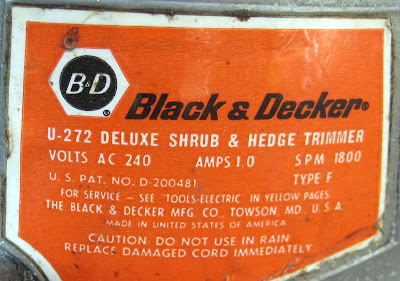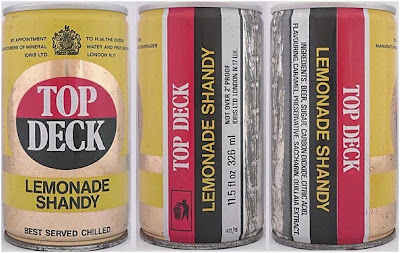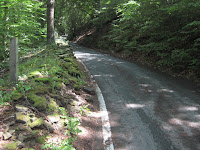New Month Old Post (first posted 14th August, 2014).
In 2009, I came across a magazine called ‘Down Your Way’ which published pieces submitted by readers. I was dismisses of most of the content, which was unjust because the best way to improve one’s writing is to write lots, and getting something into print gives the ultimate encouragement. Teenage Son had the right attitude:
“Well, if you’re so good, let’s see you get something in there.”
The result was ‘Airfix Modelling’, published the following year. It may not be entirely accurate, especially with regard to the present day, and there are other things I would change too, but I have resisted the urge to tinker. It seems to be trying too hard to entertain. I also dislike the captions used in the magazine (“model boyhood”, “glued to a hobby”) which were added by the editor.
It was, in effect, the start of this blog, although it did not appear in this form for some years.

January
1, 1965. Friday. Made F4 UID Corsair
from Airfix, and also a station booking hall.
January
2, 1965. Saturday. Made Airfix station platform.
Most of us remember Airfix, the
make-it-yourself model aeroplane kits. There were also ships, vehicles and
even, it seems from my diary, railway buildings. The Airfix company flew off
the ground, so to speak, in 1955, in a World War Two Supermarine Spitfire. It
sold well and became the first of an enormous product range. For a couple of
decades, Airfix was a very profitable business. Its faithfully reproduced, 1/72
scale models, came as injection-moulded plastic ‘trees’ of parts that slid and
rattled enticingly inside their sturdy cardboard boxes. You broke off the parts
one by one and glued them together with clear, stringy, cellulose adhesive,
which the instructions called ‘cement’. You squeezed it out of a metal tube,
releasing an exhilarating chemical vapour.
Some parts, such as wings and the fuselage,
were fairly large. Others, like the engines, fuel tanks and ailerons (to be an
Airfix modeller you really had to get to grips with aero-terminology), were
smaller, but still easy to handle. The tiniest parts, such as the pilot’s
joystick, the propeller shaft and the machine gun barrels, which in the finished
model were all supposed to move forwards, backwards, up, down and round in a
realistic manner, usually ended up glued firmly to your fingers in a horrid
sticky mess. You knew you were going to be spending the next couple of hours
peeling rubbery ‘cement’ from your fingertips, nails, nose, hair, ears and any
other exposed and unexposed bits of the body it had managed to stick to.
You could always spot inexperienced Airfix
modellers by what appeared to be globs of mucous matted into the sleeves of their
jumpers. The best way to glue very small parts was to apply minute amounts of
‘cement’ with a pin or matchstick, but you needed to have progressed beyond the
novice stage to know that.
Kits were graded according to difficulty,
but that was not as helpful as it seemed. The easiest kits, with the largest
parts, were also the smallest models. What boy, no matter how young and
inexperienced, would truly want to build the smallest and easiest models, when
the largest and most difficult had the most impressive pictures on their boxes?
For me, the ultimate was the Short
Sunderland III Coastal Command’s Fighting Flying Boat, which came in a massive
box with an all-action painting of four powerful engines, roaring away on a
high-mounted aerofoil above a magnificent white hull, banking to the right on
the lid. Once I had one, my younger brother had to have one too. It took my Dad
ages to make it for him, about three months of sticky fingered Sunday
afternoons, and the ruined sleeves of several jumpers.
You could literally spend weeks making
Airfix aeroplanes, and that was only the first stage. Next came painting. The
paints were in tiny containers. One brand was Humbrol, a Hull company that had
originally made paint for bicycles. Their paint came in delightful tiny tinlets,
with little metal lids you prised off with a coin, just like real full-sized
paint tins. Airfix’s own brand was in little glass bottles, like nail varnish
bottles with a brush fixed to the underside of the screw top. I liked gold and
silver best. They looked dense and sparkly against the glass of their bottles,
and glittered as they flowed from the point of your brush.
Sadly, there was not much call for gold and
silver. The largest aircraft surfaces, such as the wings and fuselage, tended
to be green or blue. I found it impossible to apply the colour evenly over
these large areas. I was so disappointed when, after painting a Dornier Do217E,
one of the first models I made, a splendid World War Two German bomber with
realistic rotating gun turrets and elevating barrels, it dried as patchily
green as a forest canopy from the air.
My disappointment was replaced by disbelief
when my mother, with real enthusiasm, exclaimed, “Oh Tasker, it looks just like
a real one!” Whether it really looked like a real one in camouflage, or whether
she was just trying to cheer me up, I still do not know.
You then had to apply the ‘decals’. You and
I would call them ‘transfers’, but the instructions always called them ‘decals’.
Looking this up now, I find it is short for decalcomania, derived from the
French ‘decalquer’, a ceramic decorative craze from the 1870s, but let us stay
with ‘transfers’. They came on a card from which, when moistened, you could
slide the transfers on to the model.
You positioned the German crosses, the RAF
‘roundels’ (red, white and blue rings to you and me) and other markings,
exactly as they would be on the original, a finishing touch that made for a
highly realistic model, although not realistic enough for some. Perfectionists
took things a stage further using a repertoire of illusions, such as filing the
bottoms of the wheels flat to give the impression of bulging pneumatic tyres.
There was just one overriding, inescapable
problem with Airfix models. They did not actually fly. They were not that kind
of model. You could only pretend to fly them. Holding them in your outstretched
hand you could, climb, dive, yaw, pitch, roll, bank and loop around the living
room, making terrifying explosive sounds and screaming engine noises as you
machine-gunned the family cat. Mind you, Sooty the cat had his own ideas about
that and was pretty adept at leaping acrobatically up from the floor and
smashing the model out of your hand with his teeth and claws, gouging out a
couple of strips of flesh in the process. What would Churchill have given for
air defences like that in the war? Enemy bombers ferociously snatched out of
the air and disembowelled by batteries of enormous furry felines. The Battle of
Britain would never have happened, and Churchill’s ‘never in the field of human
conflict’ speech would have had to be completely different.
Alternatively, you could admire your models
standing on the bookcase in your bedroom, until they got squashed beyond
recognition by a busy mother with a pile of sheets and blankets. Or, you could
hang them from the ceiling with invisible threads of black cotton, except that
the Short Sunderland III Flying Boat was so heavy it would have necessitated a
length of steel cable, a Bob the Builder safety helmet, and a rolled steel joist
up in the roof. You could end up with a couple of dozen models suspended in
perpetual dogfights all around your bedroom, until one day, when light had
rotted the cotton, and you had imperceptibly grown a few more tenths of an inch
taller, you inadvertently nudged one with your head, sending it crashing to the
floor in a plume of accumulated dust that hung thick in the air like smoke, as
you accidentally tripped on your model and trod it into the carpet.
To be truthful, there was not a great deal
you could do with the finished models. The interest was in the making of them.
It taught you patience and perseverance, and gave you confidence in the use of
terms like fuselage, ailerons and landing gear, admirable qualities and skills
even today.
It seems hardly anyone makes Airfix models
these days. The activity fell into decline from the late ‘70s and the company
went bankrupt. Ownership of the rights went through several financial crises
and takeovers, with at one point Airfix being owned by Humbrol, the paint
company. You can still buy the kits, but at prices that in 1965 would probably
just about have bought you the real thing. Those who do still make them are as
likely to be adults as children. A fifteen-year-old boy who made model
aeroplanes today would need to keep pretty quiet about it to avoid being beaten
up at school.
Maybe the increase in the cost of plastics
contributed to the decline, or maybe it was more down to social change and the
emergence of computer games. One thing that did not occur to many of us in 1965
was that for some fifteen-year old-boys, breathing cellulose vapour would
become an entire pastime in itself, rather than just a small part of the
pleasure of model making.
I remember the American Corsair fighter
mentioned in the diary as the last model I made. The first had been a Fairey
Swordfish, an early World War Two torpedo biplane with fiddly wing struts. But
other parts of my diary show that by fifteen my interests were poised to move
on, from making models at home to more outgoing things in the real world,
although I know now I still had some way to go.
“You still have,” said Teenage Son, unimpressed.
[Originally
published as ‘An Essential Piece of Kit in a Model Boyhood’ by Tasker Dunham in
Down Your Way: Yorkshire’s Nostalgic Magazine, Issue 145, January 2010, pages
46-48. ISSN 1365 8506. Country
Publications Ltd., Skipton, North Yorkshire.]












































